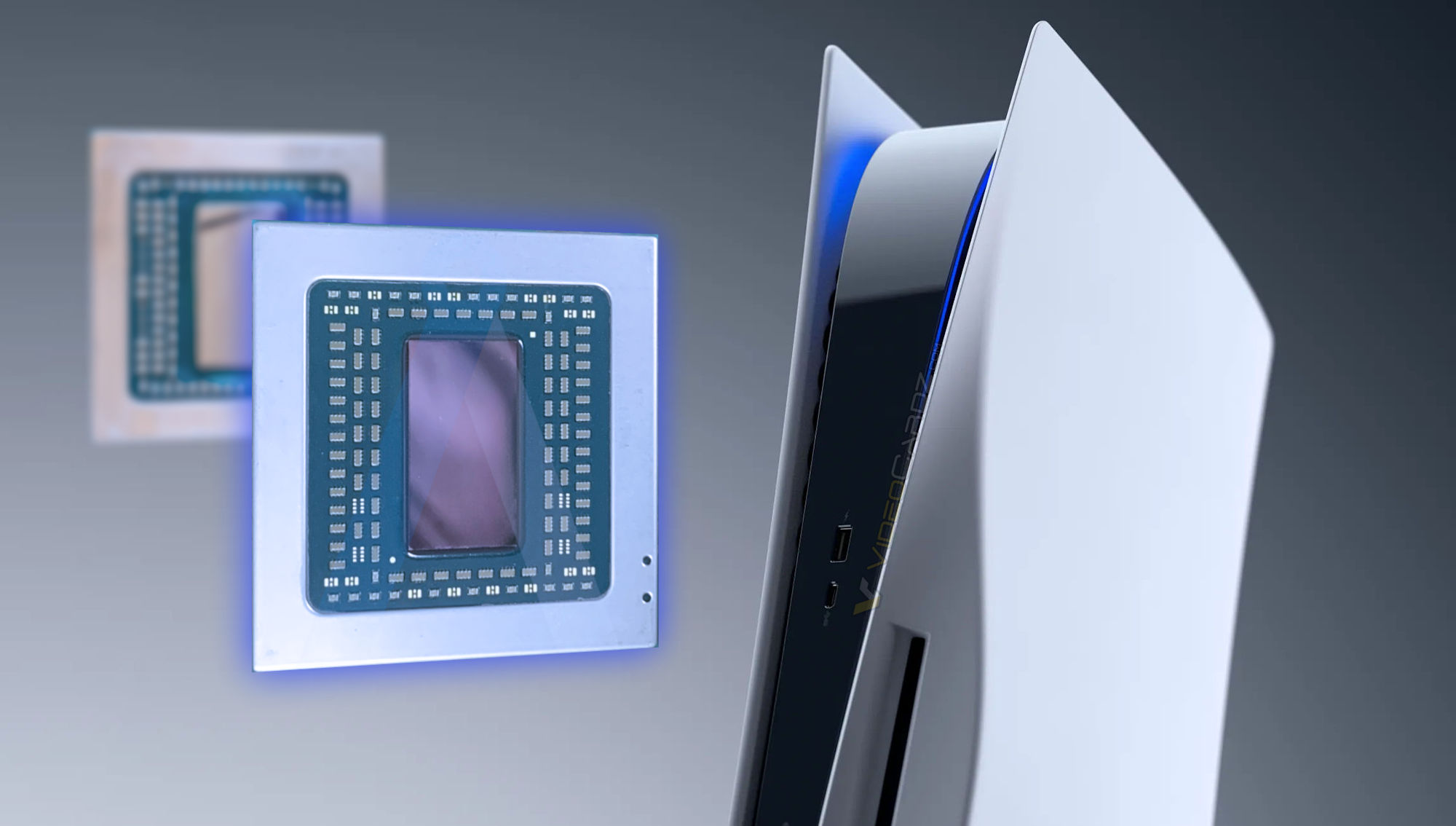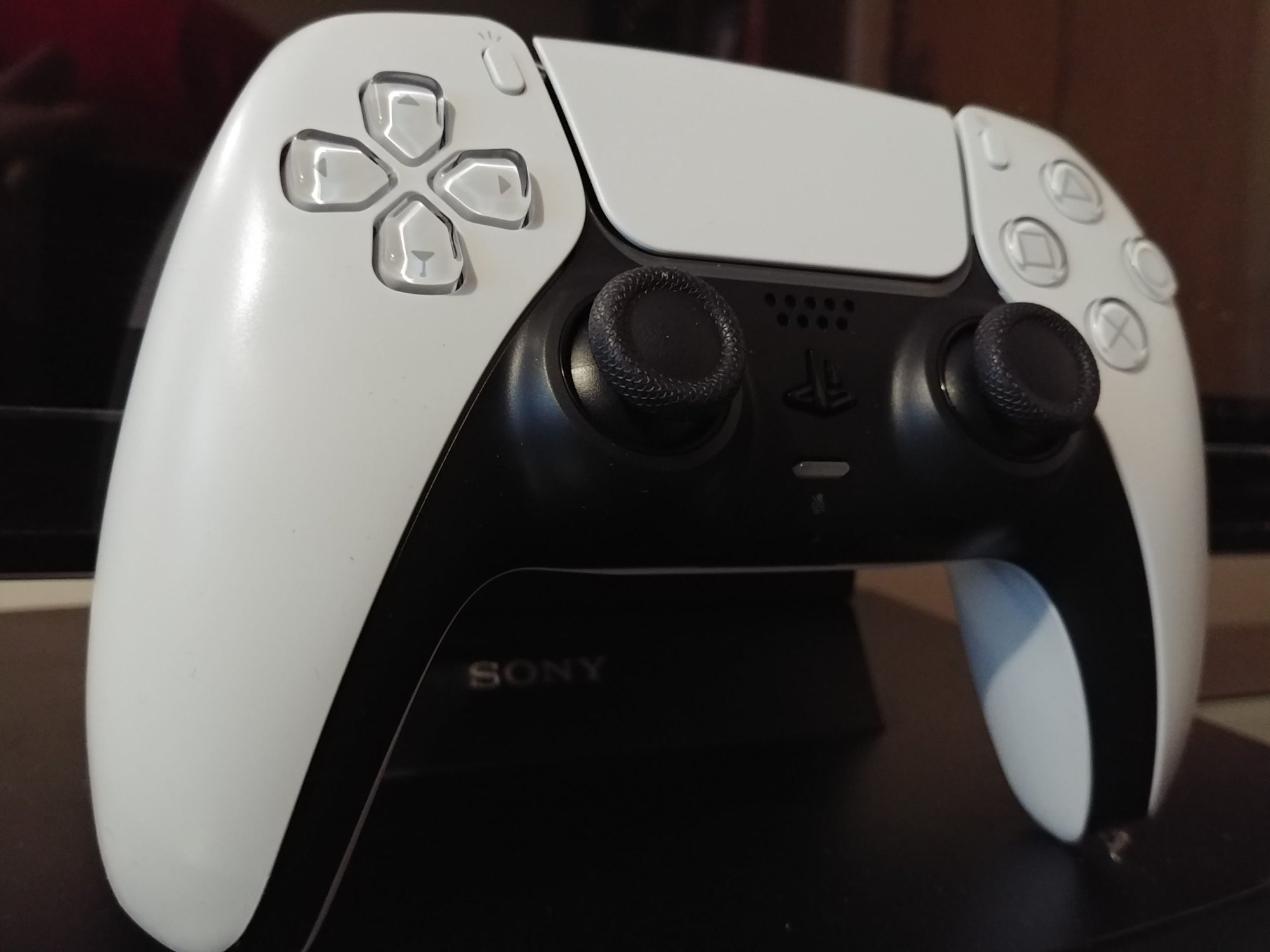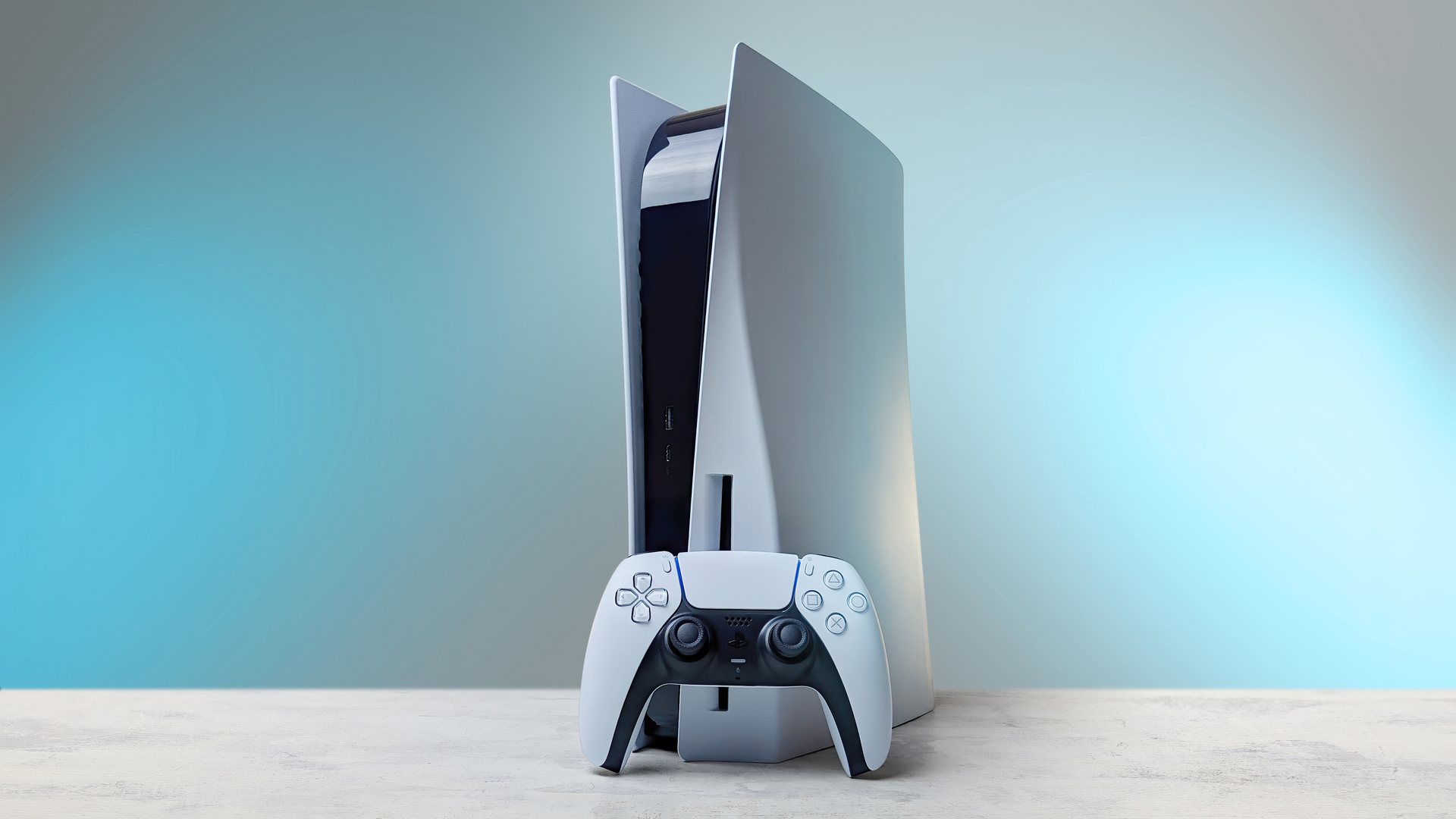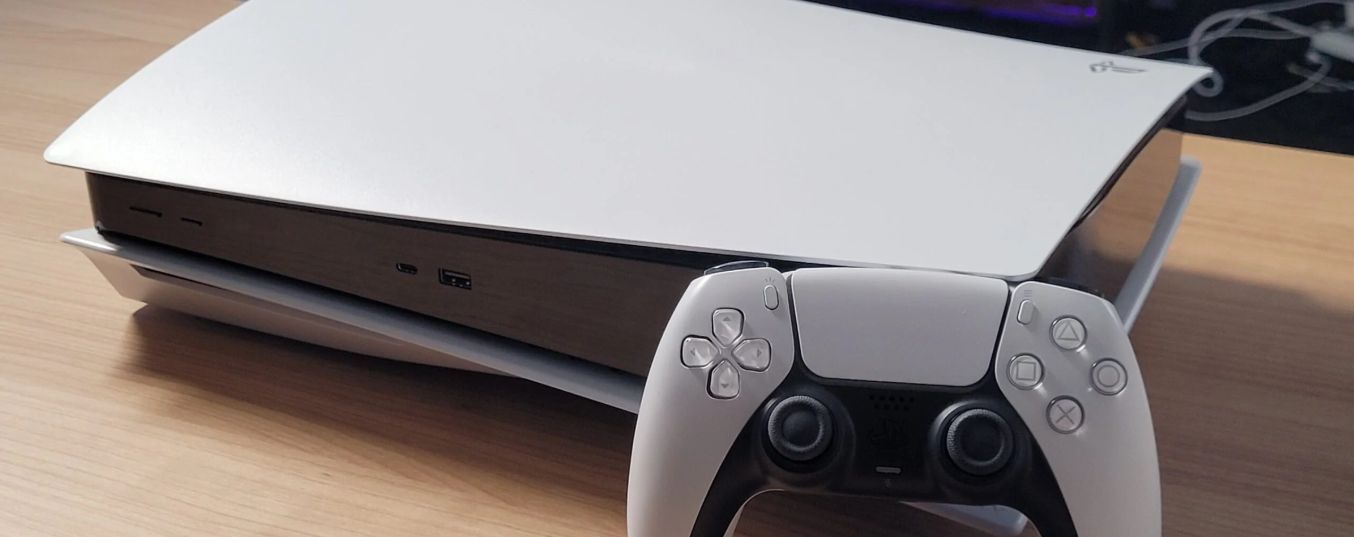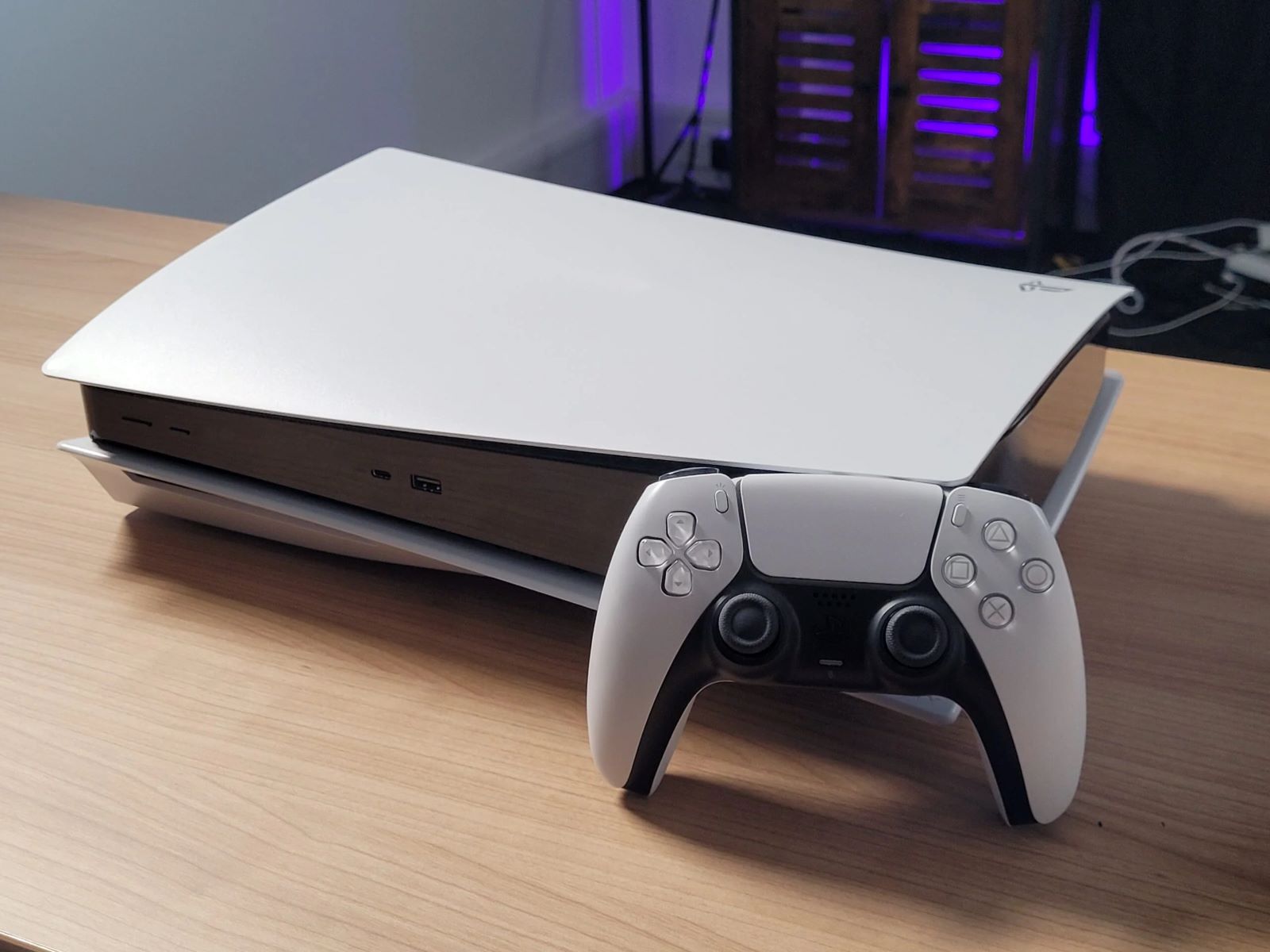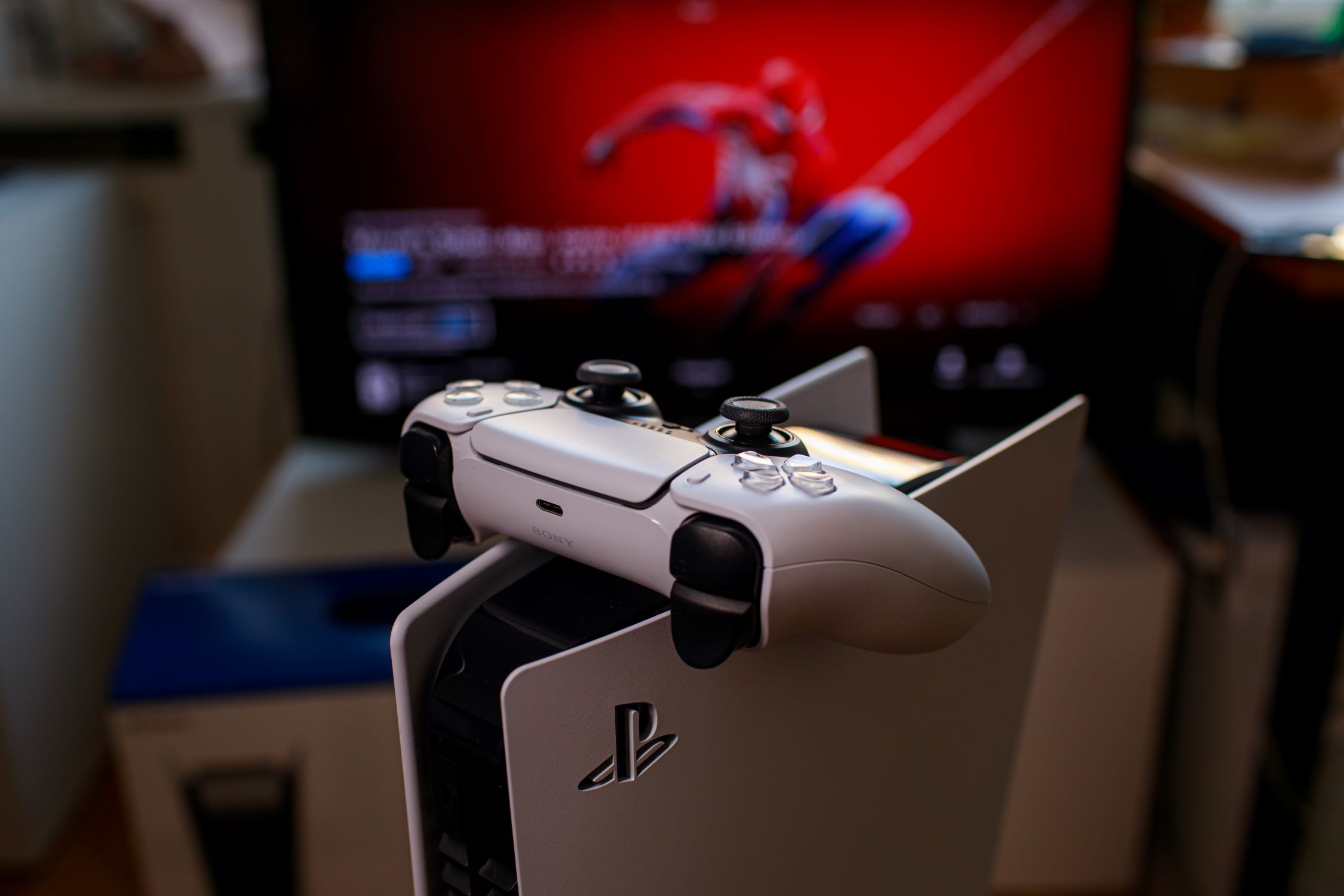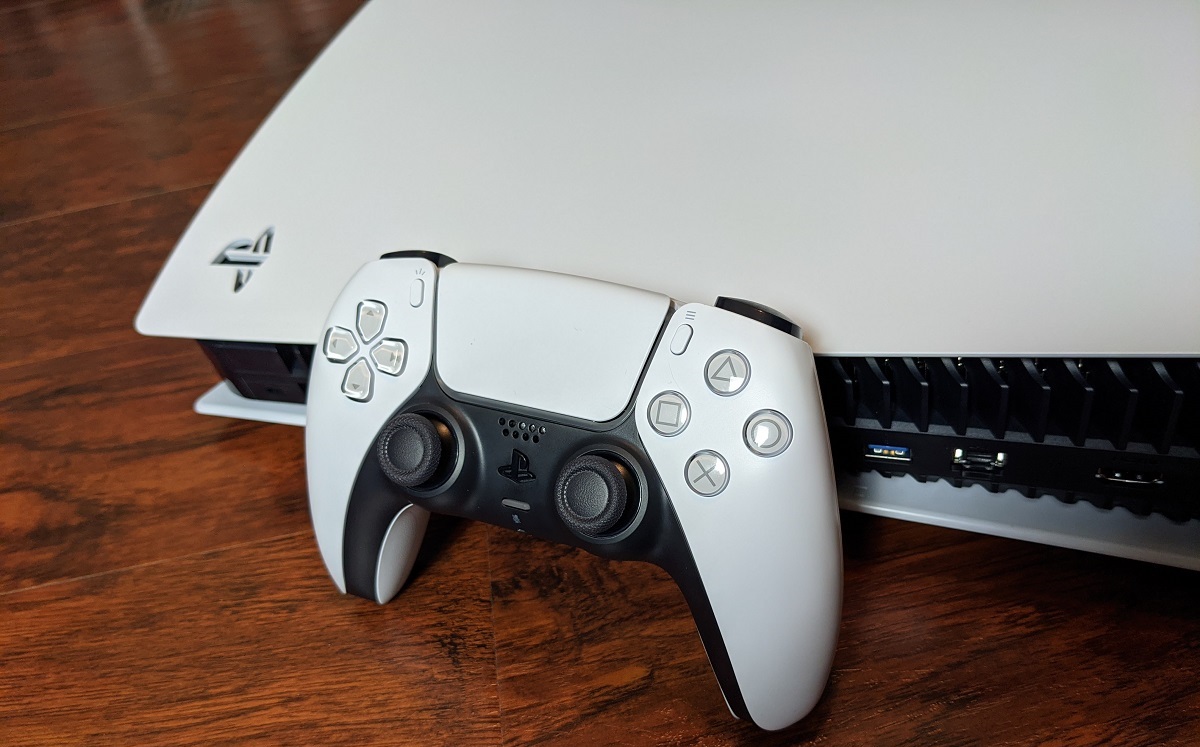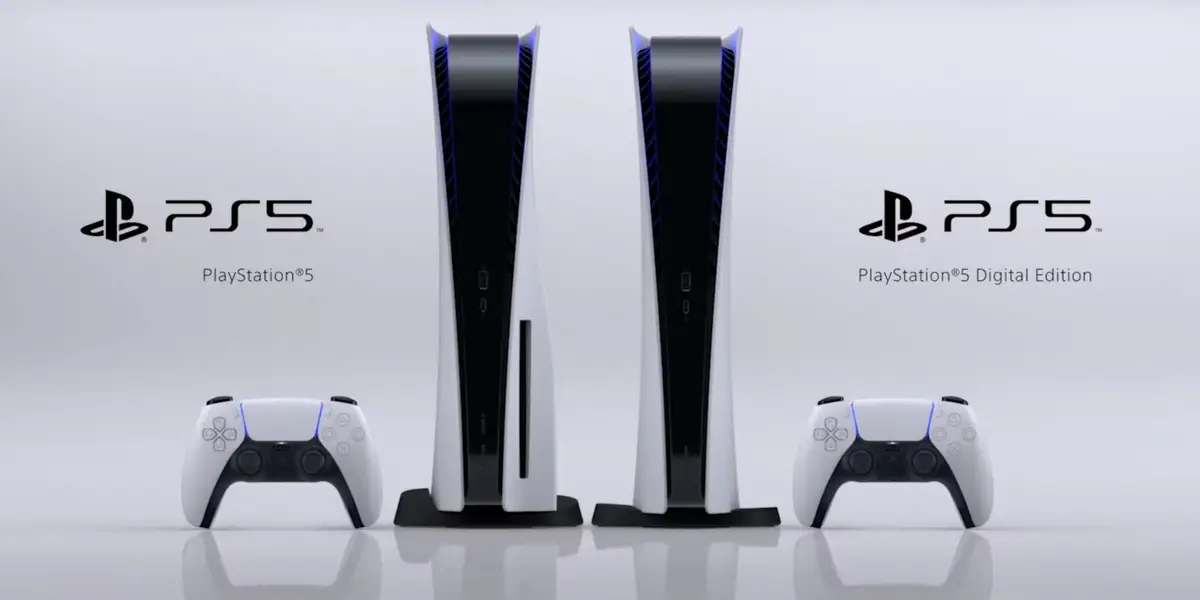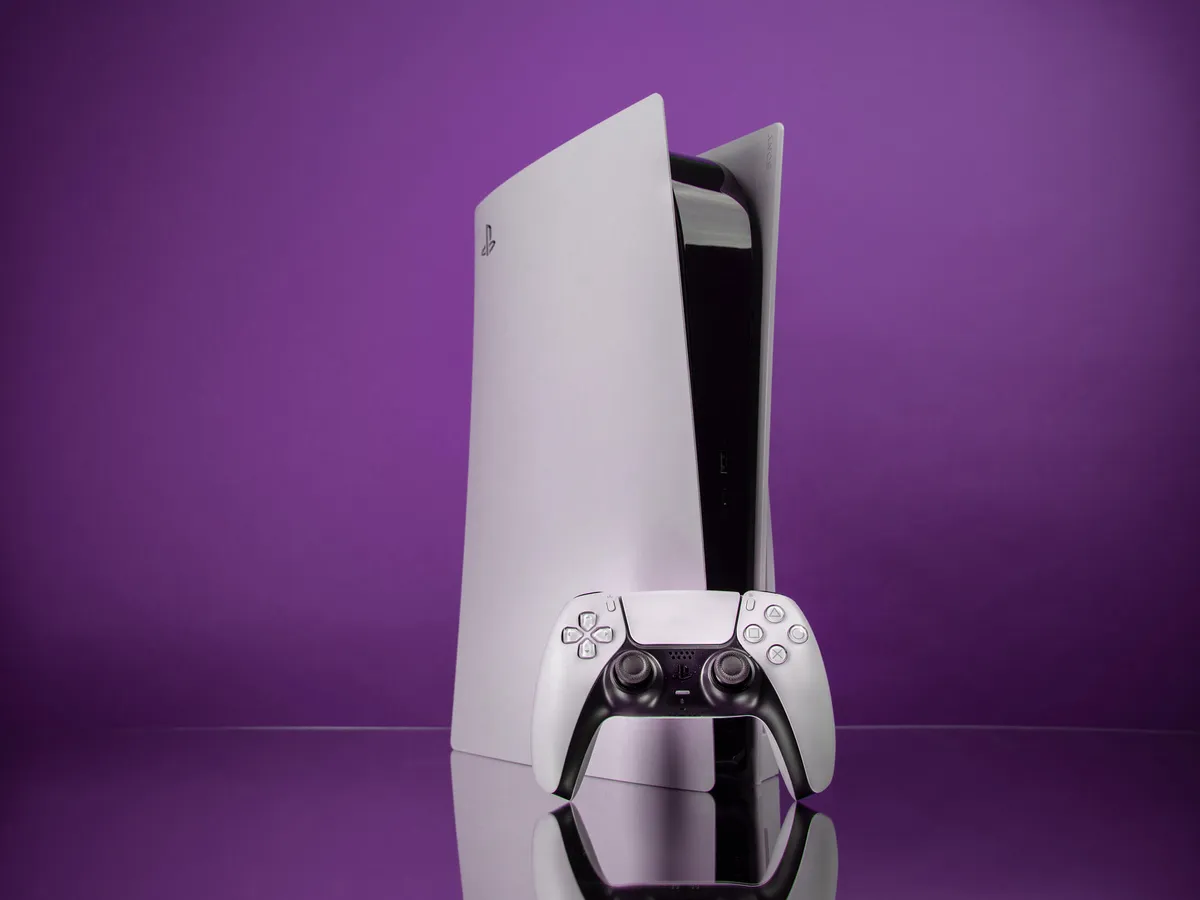Introduction
Welcome to the world of gaming consoles, where the battle for supremacy in graphics and performance never ceases. While gaming consoles have been around for decades, they continue to push the boundaries with each new generation. One crucial component that plays a significant role in delivering incredible visuals and immersive gameplay is the GPU, or Graphics Processing Unit.
A GPU is a specialized electronic circuit designed to handle and manipulate computer graphics. It is responsible for rendering images, videos, and animations with stunning detail and smoothness. In the realm of gaming consoles, the GPU is a key component that determines the graphical capabilities and overall visual experience.
With the advent of the highly anticipated PlayStation 5 (PS5), gamers are eager to know about the GPU that powers this next-generation console. Sony, the mastermind behind the PlayStation series, has raised the bar once again by equipping the PS5 with a cutting-edge GPU that promises to deliver unparalleled graphics and performance.
In this article, we will delve into the world of the PS5 GPU, exploring its architecture, specifications, and its revolutionary features like ray tracing. We will also discuss the impact of the PS5’s GPU on gaming performance and the overall gaming experience. So, put on your virtual seatbelt as we take a deep dive into the exciting world of the GPU in the PS5.
What is a GPU?
Before we dive into the specifics of the GPU in the PS5, let’s first understand what a GPU is and its role in the realm of computer graphics.
A GPU, or Graphics Processing Unit, is a specialized electronic circuit that excels in performing complex calculations needed for rendering images, videos, and animations. While CPUs (Central Processing Units) handle a wide range of tasks in a computer system, GPUs are dedicated to processing and displaying visual data quickly and efficiently.
The primary function of a GPU is to transform raw data into visually appealing images that can be displayed on a screen. It achieves this by executing a multitude of parallel operations simultaneously, making it highly efficient in handling graphics-intensive tasks. In modern gaming consoles like the PS5, the GPU is responsible for rendering lifelike characters, intricate environments, and stunning special effects that bring virtual worlds to life.
One of the key features that set GPUs apart from CPUs is their architecture. GPUs consist of thousands of smaller processing units called cores that can work in parallel, enabling them to perform calculations at a much faster rate than traditional CPUs. This parallel processing capability of GPUs allows them to handle the complex calculations required for real-time rendering and advanced graphics effects.
Moreover, GPUs are designed to handle the heavy workload associated with rendering and display tasks more efficiently than CPUs. Their architecture is optimized specifically for graphics processing, allowing them to handle extensive calculations involved in tasks like shading, texture mapping, and geometry transformation.
Over the years, GPUs have evolved to become increasingly powerful, making significant advancements in real-time rendering and graphical fidelity. They continue to drive innovation in the gaming industry, enabling developers to create visually stunning and immersive gaming experiences.
Now that we have a basic understanding of what a GPU is and its role in computer graphics, let’s explore the specific GPU that powers the PlayStation 5 and the implications it has for gaming performance and visual fidelity.
GPU in Gaming Consoles
When it comes to gaming consoles, the GPU plays a crucial role in delivering the immersive and visually stunning gaming experiences that players crave. Since the early days of gaming consoles, the GPU has undergone significant advancements, evolving to keep up with the increasing demands of modern games.
In gaming consoles, the GPU is responsible for rendering graphics, generating realistic visuals, and ensuring smooth gameplay. It handles tasks such as polygon rendering, texture mapping, lighting effects, and more. The capabilities of the GPU greatly impact the graphical fidelity, frame rates, and overall performance of games on consoles.
Historically, gaming consoles have often featured custom-built GPUs tailored to meet the specific requirements of the console’s hardware and optimize the gaming experience. These console-specific GPUs are designed to deliver exceptional performance and graphics that are optimized for the console’s hardware architecture.
Furthermore, gaming consoles usually feature dedicated video memory for the GPU, allowing it to handle large amounts of graphical data effectively. This dedicated video memory ensures that the GPU has quick access to the necessary assets, textures, and shaders, improving overall performance and reducing loading times.
The GPU in gaming consoles not only contributes to improving graphics and visual fidelity but also enables advanced features that enhance gaming experiences. For example, features like dynamic lighting, realistic shadows, particle effects, and physics simulations can provide players with a more immersive gameplay environment.
As gaming consoles continue to evolve, the GPUs they house become more powerful and feature-packed. This allows developers to create more visually stunning and realistic game worlds, with a greater focus on details and immersion.
Now that we have explored the role of GPUs in gaming consoles, let’s dive into the specifics of the GPU in the PlayStation 5 and discover how it takes gaming visuals to the next level.
The GPU in the PlayStation 5
When it comes to gaming consoles, Sony has always strived to push the boundaries of graphical performance, and the PlayStation 5 is no exception. The GPU in the PS5 is a key component that elevates the gaming experience to new heights.
The PlayStation 5 is powered by a custom GPU developed in collaboration with AMD. This GPU is based on AMD’s RDNA 2 architecture, which is known for its impressive graphics capabilities and efficiency. With its advanced architecture and innovative features, the PS5’s GPU delivers stunning visuals and exceptional performance.
One of the standout features of the PS5’s GPU is its impressive ray tracing capabilities. Ray tracing is a rendering technique that simulates the behavior of light in a virtual environment, resulting in incredibly realistic lighting, shadows, and reflections. With hardware-accelerated ray tracing support, the PS5’s GPU can deliver immersive visuals that mimic real-world lighting conditions, adding a new level of realism to games.
In addition to ray tracing, the GPU in the PS5 features a high core count, allowing for more parallel processing power and improved performance. This translates to smoother frame rates, faster load times, and the ability to handle complex visual effects without compromising on performance.
The PS5’s GPU also boasts support for variable rate shading (VRS), a technique that allows developers to allocate more GPU resources to the most visually demanding areas of a scene while reducing resources in less demanding areas. This results in better overall performance and graphical fidelity, as the GPU focuses its power where it is most needed.
Another noteworthy feature of the PS5’s GPU is its support for 4K gaming. With its powerful graphics capabilities, the PS5 can deliver games in stunning 4K resolution, providing players with incredibly detailed visuals and crisp image quality.
Overall, the GPU in the PlayStation 5 is a powerhouse that sets a new standard in console gaming graphics. With its advanced architecture, support for ray tracing, high core count, and 4K gaming capabilities, the PS5’s GPU ensures that players are treated to visually breathtaking and immersive gaming experiences.
Architecture and Specifications of the PS5 GPU
The architecture and specifications of the GPU in the PlayStation 5 demonstrate its immense power and capability to deliver groundbreaking gaming experiences. Let’s take a closer look at the architecture and specifications that make the PS5’s GPU a true powerhouse.
The GPU in the PS5 is based on AMD’s RDNA 2 architecture, which is specifically designed to maximize performance, efficiency, and visual fidelity. With its advanced architecture, the PS5’s GPU features a high core count, allowing for parallel processing of data and efficient rendering of complex graphics.
In terms of specifications, the PS5’s GPU boasts an impressive 10.28 teraflops of computing power. This immense amount of computing power enables the GPU to handle graphics-intensive tasks with ease, delivering smooth gameplay and stunning visuals.
Furthermore, the PS5’s GPU features 36 compute units running at a clock speed of up to 2.23 GHz. This high clock speed ensures fast processing and efficient rendering of graphics, resulting in smooth frame rates and reduced latency.
The PS5 also comes equipped with 16 GB of GDDR6 memory, which provides high-speed access to game assets and textures. This ensures that the GPU has quick access to the necessary data, enabling it to render detailed and realistic graphics without any lag or slowdown.
Another notable feature of the PS5’s GPU is its support for hardware-accelerated ray tracing. Ray tracing allows for realistic lighting, shadows, and reflections in games, immersing players in lifelike virtual environments. The dedicated hardware support for ray tracing in the PS5’s GPU ensures smooth and efficient rendering of these advanced graphical effects.
In addition to ray tracing, the PS5’s GPU supports features like variable rate shading, which maximizes performance by allocating GPU resources to areas that require more detail, while reducing resources in less demanding areas. This allows for improved frame rates and better overall visual quality.
Overall, the architecture and specifications of the GPU in the PlayStation 5 demonstrate its immense capabilities and its ability to push the boundaries of console gaming graphics. With its high core count, impressive computing power, and advanced features like ray tracing and variable rate shading, the PS5’s GPU sets a new standard for immersive and visually stunning gaming experiences.
Ray Tracing on the PS5 GPU
Ray tracing is a revolutionary rendering technique that simulates the behavior of light in a virtual environment, creating incredibly realistic and immersive visuals. The inclusion of ray tracing support on the GPU of the PlayStation 5 (PS5) takes gaming graphics to a whole new level.
With hardware-accelerated ray tracing support, the PS5’s GPU can accurately trace the path of each ray of light as it interacts with the virtual environment. This enables the generation of realistic lighting, shadows, reflections, and other visual effects that mimic real-world behavior. The result is visually stunning and lifelike game worlds that enhance the overall gaming experience.
Ray tracing adds a new dimension of realism to games by accurately simulating the way light interacts with different surfaces and materials. This means that light can bounce off objects and create realistic shadows, reflections, and refractions. For example, in a game with ray tracing enabled, a player may see their character’s reflection in a puddle, or sunlight streaming through a window, casting accurate shadows on the environment. This level of detail and realism immerses players in virtual worlds like never before.
One of the key advantages of ray tracing on the PS5’s GPU is the ability to deliver these advanced graphical effects in real-time. The GPU’s dedicated hardware for ray tracing allows for efficient and fast computation of the complex calculations involved in simulating the behavior of light. This means that players can experience ray tracing effects without sacrificing smooth frame rates or compromising on performance.
In addition to enhancing visual fidelity, ray tracing also has a significant impact on gameplay. Realistic lighting and shadows can provide players with valuable visual cues, making it easier to navigate and interact with game environments. For example, accurate shadows can help indicate the position of enemies or provide depth perception in platforming games.
It’s worth noting that the implementation of ray tracing in games on the PS5 will depend on the developers’ utilization of this feature. While first-party games developed by Sony are expected to showcase the full potential of ray tracing on the PS5, third-party developers will also have the opportunity to take advantage of this powerful technology when creating their games.
In summary, the inclusion of ray tracing support on the PS5’s GPU brings unprecedented realism and visual fidelity to gaming. The ability to accurately simulate the behavior of light enhances the immersion and overall quality of game worlds. Combined with the powerful hardware of the PS5’s GPU, ray tracing ensures that players can enjoy stunning and lifelike graphics without sacrificing performance.
Performance and Graphics Enhancements
The powerful GPU in the PlayStation 5 (PS5) brings significant performance and graphics enhancements to the gaming experience, elevating it to new heights. With its cutting-edge technology and optimized architecture, the PS5 delivers improved visuals, smoother gameplay, and enhanced immersion.
One of the key factors contributing to the enhanced performance of the PS5’s GPU is its high computing power. With an impressive 10.28 teraflops of computing power, the GPU can handle demanding graphics-intensive tasks with ease. This leads to higher frame rates, reduced loading times, and enhanced overall responsiveness, providing a seamless and immersive gaming experience.
In addition to raw computing power, the PS5’s GPU features a high core count and a high clock speed, allowing for efficient parallel processing and faster rendering of graphics. This leads to more detailed and realistic visuals, with improved textures, shading, and lighting effects.
Moreover, the inclusion of hardware-accelerated ray tracing support unlocks a whole new level of graphical fidelity. Ray tracing allows for realistic lighting, shadows, reflections, and global illumination, giving game worlds a lifelike appearance. This immersive feature enhances the visual experience, making game environments feel more dynamic and realistic.
Another graphics enhancement that the PS5’s GPU brings is its support for 4K resolution gaming. With its powerful hardware and advanced technology, the PS5 can deliver games in stunning 4K resolution, providing incredible detail and clarity. This level of visual fidelity brings games to life, allowing players to fully appreciate the intricacies of game environments and character models.
In addition to 4K resolution, the PS5’s GPU supports advanced visual technologies such as high dynamic range (HDR) and variable refresh rate (VRR). HDR enhances the color and contrast of visuals, resulting in more vibrant and lifelike colors. VRR, on the other hand, improves gameplay smoothness by synchronizing the display’s refresh rate with the GPU’s output, reducing screen tearing and input lag.
Overall, the performance and graphics enhancements offered by the PS5’s GPU significantly enhance the gaming experience. From increased computing power to advanced graphical features like ray tracing and support for 4K resolution, the PS5 brings games to a new level of fidelity, creating visually stunning and immersive worlds that captivate players.
Conclusion
The GPU in the PlayStation 5 (PS5) is a remarkable piece of technology that revolutionizes the gaming experience. With its advanced architecture, impressive computing power, and support for cutting-edge features like ray tracing, the PS5’s GPU delivers breathtaking visuals and exceptional performance.
The inclusion of hardware-accelerated ray tracing support on the PS5’s GPU brings a new level of realism and immersion to gaming. The ability to simulate the behavior of light accurately allows for stunning lighting effects, realistic shadows, and lifelike reflections, creating visually engaging and immersive game worlds.
Furthermore, the PS5’s GPU excels in performance, boasting high computing power, a high core count, and support for 4K gaming. This allows for smooth gameplay, faster loading times, and visuals that showcase intricate details with crispness and clarity. The GPU’s support for advanced graphical technologies like HDR and VRR further enhance the visual experience, bringing vibrant colors and eliminating screen tearing or input lag.
The GPU in the PS5 sets a new standard for console gaming graphics, pushing the boundaries of what is possible in terms of visual fidelity and immersive gameplay. With its powerful hardware, innovative features, and optimized architecture, the PS5’s GPU ensures that players can enjoy captivating gaming experiences that transport them to extraordinary virtual worlds.
In conclusion, the GPU in the PlayStation 5 is a game-changer in the realm of console gaming. Its advanced technology, impressive performance, and stunning graphical capabilities elevate the gaming experience to a whole new level. The future of gaming looks brighter than ever, thanks to the incredible power and innovation packed into the GPU of the PS5.







